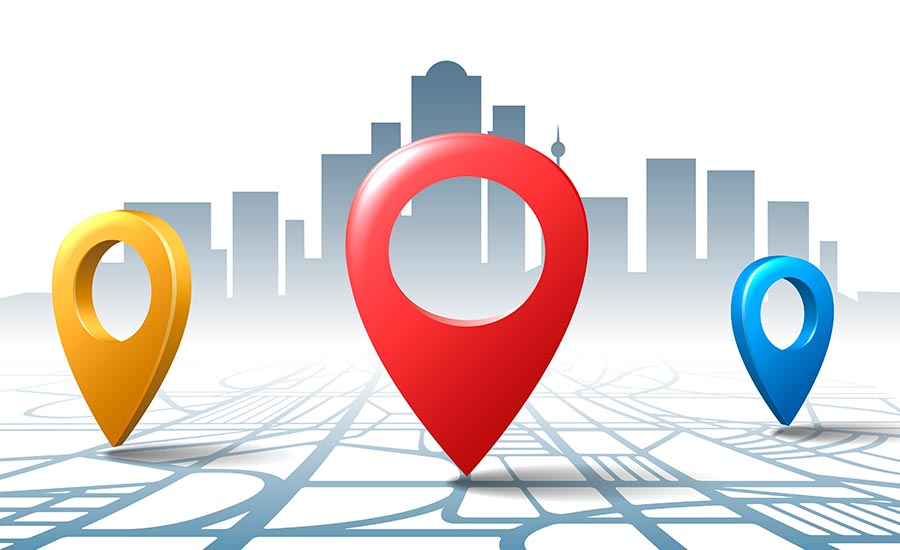Going to multiple languages is the next step when there’s no more room for growth in your current market. Maybe because you’ve already reached the majority of your potential customers or there is just too much competition.
However, introducing your brand to a new market raises an important question: Should you localize your brand or globalize it?
Even though both globalization and localization are about making your brand recognized in other countries and wider markets, they’re completely different. You should know the difference between them. That’s necessary to get the results you are aiming for and grow your business accordingly.
So, if you’re a business owner looking for multilingual expansion, but you aren’t sure in which direction you should go, make sure to read through this article. We’ll break down what exactly the differences between globalization and localization are. At the end, we’ll help you decide which one is the right one for you and your current business situation.
What’s Localization?

Localization is the process of adapting an asset to a specific locale (That’s where the word “localization” comes from).
Possible assets could be:
- Websites
- Books
- Social media content
- Videos
- Audios
And so on.
The objective of localization is to deliver a message to a different culture without losing its original meaning.
For example: let’s say that you have a book where in a paragraph you use the expression “water under the bridge”.
As you might know, this expression refers to leaving the past behind and continuing towards the future. However, in Spanish this phrase makes no sense. If you say “water under the bridge” to a native Spanish speaker, you won’t be understood correctly. He’ll literally think about water passing below a bridge.
So, in order to be understood by a Spanish speaking audience you would have to use “Borrón y cuenta nueva” which would translate to “erase it all and new account”.
But there is not just the risk of a suboptimal translation that doesn’t recreate the intended reaction because it doesn’t carry the true core of your message. There are many examples of historical figures that are generally perceived positively in one culture but extremely negative in another culture. Or things that are received as inappropriate in one and completely harmless in another culture.
4 Ways to Localize Your Business
Now, let’s talk about ways you can use localization in your business. These are some methods you can implement right away.
Translating Your Content
When you want to localize your business for a new market, the first step is to translate your content.
For example, you can translate the text of your website to a specific language. If you were to take your business to many countries of Latin America, you’ll need to translate your website into Spanish.
Translating your content is crucial when it comes to your global localization strategy. In fact, 55% of global consumers would only purchase from websites that provide product information in their first language.
When translating your assets, you need to define appropriate expressions and terms to properly brand your content in the new language. Creating a glossary with such terms and important words for the brand is essential to make sure your brand is recognizable and has a continuous message.
Now, if you’re just testing waters and would like to see how your brand is received in a new locale, you can simply translate some of your assets.
Do you have a YouTube channel? If so, you can translate your most successful videos and with the help of voice actors, take them to a new language.
Adapting Your Designs
Many businesses think that they can reuse the same designs they used in the original language when moving to a new market.
Sometimes they’re right… and sometimes they aren’t.
You see, design and colors have different meanings across different countries. For example, red symbolizes passion, love and danger in the western hemisphere, while in China red symbolizes happiness, good fortune and luck.
When your brand is being introduced into a new locale, you need to ask yourself: “Will our current designs convey the message we want to transmit, or should we change them so it fits into the outside culture?”.
As we said, sometimes you don’t need to change your designs at all.
How can you be sure that you need (or don’t need) to adapt your designs? By having a native expert from that market on your side. He or she will tell you what’s best for you to do.
Creating New Marketing Strategies
Even if you have a 7-figure business widely known in your country, you won’t thrive in a new culture if you lack one thing…
Proper marketing.
Here’s the thing: Your brand is going to be in a market where you won’t have much recognition and will have to face a lot of new competition.
However, you probably can’t use your currently working marketing strategies for this new market.
Why?
Because different cultures can make your advertising to be interpreted in different ways.
Let’s take Apple as an example.
Apple had an ad many years ago where the message was that people who use common PC’s were boring, and those who used Apple computers were cool. However, in Japan, diminishing your competition in that way is seen as disrespectful. That’s why Apple couldn’t just translate that ad and run it.
It needed localization.
So… what did Apple do? It made a new ad showing 2 people. One of them was wearing a suit while the other one was in a more casual outfit.
Using this approach, Apple’s message for the Japanese market was: “If you using a normal PC that’s totally fine. You’re this kind of guy. But if you use a Mac, then you’re more like this cool guy”.
The message was essentially the same, but it was communicated more appropriately for a Japanese audience.
So, instead of using your current marketing strategies, you need to adapt them to the cultures you’re aiming at. This might take some work. Yet, it’ll be a well invested effort.
Accepting Different Currencies
Localization (and globalization) goes beyond language or design. It’s also about user experience. And one of the most important things when it comes to user experience is the displayed currency.
Why is currency localization so essential? Because today’s consumers expect to see the prices in their local currency.
Yes, the USD Dollar is the most common currency worldwide. And yes, you can get customers by charging them in USD.
Yet, when you display the price of your products in a currency that’s not usually employed by your audience, they need to make the conversion to their local currency by themselves. This tiny extra effort on the customer’s side might already cost you a new client.
Also, some people may not trust the payment process simply because they can’t pay in their own currency.
That’s why currency localization shouldn’t be out of your radar.
How can your company charge customers in their local currency?
If you sell digital products, you can sell your localized products through Hotmart. Hotmart is a digital platform where you can buy or sell infoproducts, and they take care of the whole sales process.
When Mexican people want to buy one of your courses through Hotmart, they’ll pay in Mexican pesos. The same will happen with French people, who’ll pay in Euros.
Things are a little bit more complicated when you try to accept local currencies in Asian countries, but you can absolutely do it.
What’s Globalization?

We’ve talked about localization, but now it’s time to discuss globalization.
Globalization is the process of adapting an asset so it can be understood across the whole world.
You see the difference between localization and globalization?
While localization just focuses on taking an asset into a specific locale, globalization goes a step further. Its purpose is to make your business turn into a global phenomenon known by everybody.
Let’s make one thing clear: Not many businesses have reached globalization.
Globalization requires a huge budget and an even bigger and diverse team of professionals. That’s the reason why only big enterprises like McDonalds, Apple, Microsoft or Coca-Cola have successfully implemented globalization.
2 Ways to Implement Globalization in Your Business
Even though globalization is a hard goal to achieve, it’s not impossible. And once you’ve done localization successfully, your globalization process should begin.
Below you’ll see 2 ways to Implement globalization in your business. There are more, of course, but these 2 are the easiest ones.
Supporting Multiple Languages on Your Website
In localization, your objective was to translate your content into a specific language to make your message understandable in a specific locale. However, when you want to go global, one language isn’t enough.
You need multiple languages.
One of the best places to start using multiple languages is on your website.
You can support multiple languages on your website following 2 paths:
- Buying different domains
- Employing subdomains
For example, when you search for McDonald’s on Google from an US IP address, mcdonalds.com will be the top 1 result. But when you do the same search from a Mexican IP address, mcdonalds.com.mx will be the top result. In this case, McDonald’s bought different domains.
Now let’s take Mindvalley’s example. If you search Mindvalley on Google from an US IP address, mindvalley.com will be the top result. If you do this from a Mexican IP address, the top result will also be mindvalley.com, but once you click on the link, you’re redirected to mindvalley.com/es. Mindvalley is using subdomains.
So, first of all, you need to translate the content of your website to multiple languages. When you have everything ready, you need to decide if you want to buy more domains or use subdomains.
We recommend you to employ subdomains because it’ll help you rank faster on search engines. After all, your main domain already has a reputation.
Prioritizing User Experience
User Experience (UX) was important during localization, but for globalization it is absolutely essential.
Why is that?
Because globalization involves making your brand available in places like Japan or China, where cultures are quite different than most western cultures: cars are driven on the right side, people have different cultural values… and the right-to-left format in writing is a standard.
For example, when you read a book in Japanese, you start it from the last page (which is their first page). This makes globalization a little bit more tricky.
Changing your assets to be read right-to-left might enormously affect your designs.
Other examples for UX could be:
- Currency localization
- Measurement units
- Formats (dates, times)
- Consumer preferences
Globalization vs Localization: Which one is Right for You?
Now that we’ve discussed the differences between globalization and localization… Which one is right for you?
It depends on the size of your business and its current situation.
If you have a 6- or 7-figure company that’s only available in English, localization is the next step you need to take. Think about one new market you want to conquer with your brand and then plan out your localization process.
If, on the other hand, you have a 9-figure brand that’s already in a few languages, globalization should be your next goal.
Bear in mind that, because globalization is more complicated and investment heavy than localization, localization can be seen as the first step to globalization. Localization will allow you to gain valuable experience of the different challenges of entering a market in a new language so you will be better prepared when going for globalization.
Would You Like to Expand Into Multiple Languages?
It doesn’t matter if you want to implement localization or globalization in your business. None of it can be achieved without the right team on your side. A team with experience in all different aspects and processes in this regard.
That’s why we’re here to help you.

Here at InfOhana we are not just very experienced in this area, we also have a deep passion for all the work that is necessary to make this happen. We will gladly help you to localize your brand in one or multiple languages.
Our team of experts will take care of your expansion and handle everything you need:
- Translation
- Copywriting
- Proofreading
- Marketing strategies
- Voice over and dubbing
- Audio engineering
- Graphic designers
- Video editing
All under a single roof.
If you’re willing to take your brand into new languages and explode your revenue, click the button below to schedule a free call with us. We’ll discuss the right strategies and the results you can expect.
Schedule Your Free 30-Minute Call with Us
Let’s work together to make your brand even more successful.
Your success is our success.
